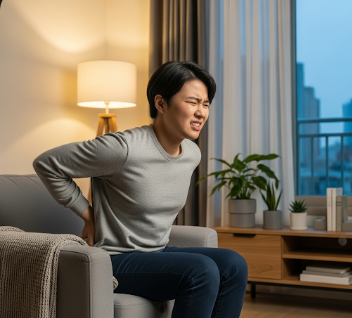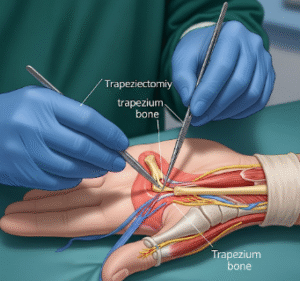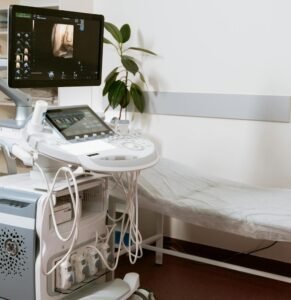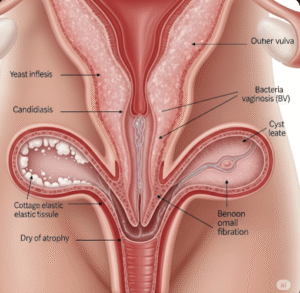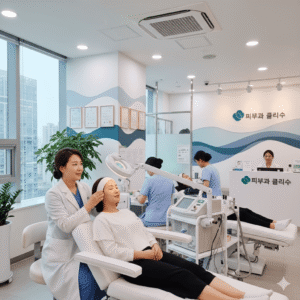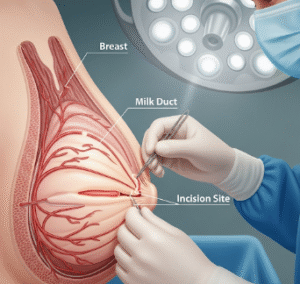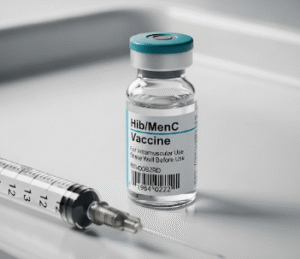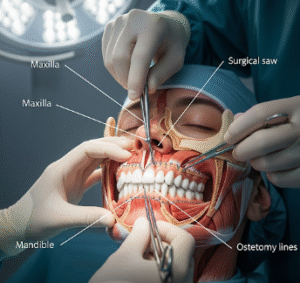Overview
Pain in the back is a common complaint affecting people of all ages. It can range from mild discomfort to severe, debilitating pain, often interfering with daily activities. Back pain can occur in the upper, middle, or lower back, and sometimes radiates to the legs, hips, or shoulders, depending on the underlying cause.
Back pain is not a disease itself but a symptom of musculoskeletal, neurological, or systemic conditions. Common causes include muscle strain, herniated discs, arthritis, kidney problems, infections, and spinal abnormalities. In Korea, advanced diagnostic and treatment options are available, including imaging, minimally invasive surgery, physical therapy, and rehabilitation programs.
➤ Pain in any region of the back, ranging from mild to severe
➤ May result from musculoskeletal, neurological, or systemic causes
➤ Early diagnosis prevents chronic pain and disability
Key Facts
➤ Back pain is one of the most common causes of disability worldwide.
➤ Acute back pain lasts less than six weeks; chronic pain persists longer than three months.
➤ Causes range from muscle strain, poor posture, disc problems, spinal stenosis, to kidney or systemic diseases.
➤ Korean hospitals offer multidisciplinary care, combining orthopedics, neurology, and pain management.
➤ Early intervention improves outcomes and reduces risk of long-term disability.
What is Pain in the Back?
Back pain refers to discomfort or pain along the spine or surrounding muscles. It may be:
➤ Acute: Sudden, short-term pain often due to injury or strain.
➤ Chronic: Lasting more than three months, often related to degenerative changes or systemic conditions.
➤ Localized: Confined to a specific region of the back.
➤ Radiating: Pain that spreads to the legs, arms, or other areas due to nerve involvement.
Pain can be sharp, dull, throbbing, or burning, depending on the affected structures.
What Symptoms Are Related To
Back pain can occur with other signs depending on the underlying cause:
➤ Muscle stiffness, tightness, or spasms.
➤ Pain radiating to legs, hips, or shoulders.
➤ Numbness, tingling, or weakness in the limbs (nerve compression).
➤ Limited range of motion or difficulty standing, walking, or bending.
➤ Fever, weight loss, or night sweats (possible infection or systemic disease).
➤ Pain worse at night or when sitting/standing for long periods.
➤ Urinary or bowel changes (possible spinal cord involvement).
What Causes / Possible Causes
Back pain can arise from musculoskeletal, neurological, or systemic conditions. Common causes include:
➤ Muscle or Ligament Strain
➤ Poor posture, heavy lifting, sudden movements.
➤ Overuse injuries from sports or repetitive activities.
➤ Spinal Abnormalities
➤ Herniated or bulging discs pressing on nerves.
➤ Spinal stenosis (narrowing of spinal canal).
➤ Osteoarthritis or degenerative disc disease.
➤ Infections
➤ Spinal infections (osteomyelitis, discitis).
➤ Kidney infections causing referred pain to the back.
➤ Trauma
➤ Fractures from accidents or falls.
➤ Systemic Conditions
➤ Osteoporosis, cancer, or inflammatory conditions like ankylosing spondylitis.
➤ Kidney stones or urinary tract infections.
When Should I See My Doctor
Seek medical attention if back pain is accompanied by:
➤ Severe, sudden pain after injury or trauma.
➤ Numbness, tingling, or weakness in the legs or arms.
➤ Loss of bladder or bowel control.
➤ Fever, night sweats, or unexplained weight loss.
➤ Pain that persists more than a few weeks or worsens over time.
➤ History of cancer, osteoporosis, or chronic illness.
Early evaluation can prevent chronic pain, nerve damage, and disability.
Care and Treatment
Treatment of back pain depends on cause, severity, and patient condition.
➤ Conservative Care
➤ Rest and activity modification.
➤ Physical therapy, stretching, and strengthening exercises.
➤ Heat or cold therapy.
➤ Over-the-counter pain medications or anti-inflammatory drugs.
➤ Medical Treatment
➤ Prescription analgesics, muscle relaxants, or nerve pain medications.
➤ Epidural steroid injections for nerve-related pain.
➤ Surgical Treatment
➤ Minimally invasive procedures for herniated discs or spinal stenosis.
➤ Spinal fusion or decompression surgeries for severe structural abnormalities.
➤ Lifestyle and Preventive Measures
➤ Maintaining healthy weight and posture.
➤ Regular exercise focusing on core strength.
➤ Avoiding prolonged sitting or improper lifting.
Treatment Options in Korea
Korea provides advanced back pain management, integrating medical, surgical, and rehabilitative care.
➤ Top Hospitals for Back Pain & Spine Care
➤ Asan Medical Center (Seoul): Specialized in spinal surgery and pain management.
➤ Samsung Medical Center: Minimally invasive spine procedures and rehabilitation programs.
➤ Seoul National University Hospital (SNUH): Comprehensive spine care including neurology and orthopedics.
➤ Yonsei Severance Hospital: Multidisciplinary approach for chronic and acute back pain.
➤ Advanced Diagnostic Tools
➤ MRI and CT scans for spine evaluation.
➤ X-rays and bone density tests.
➤ Electromyography (EMG) for nerve function assessment.
➤ Modern Interventions
➤ Minimally invasive spinal surgeries.
➤ Pain management injections (epidural, facet joint, or nerve blocks).
➤ Rehabilitation programs including physical therapy, hydrotherapy, and chiropractic care.

